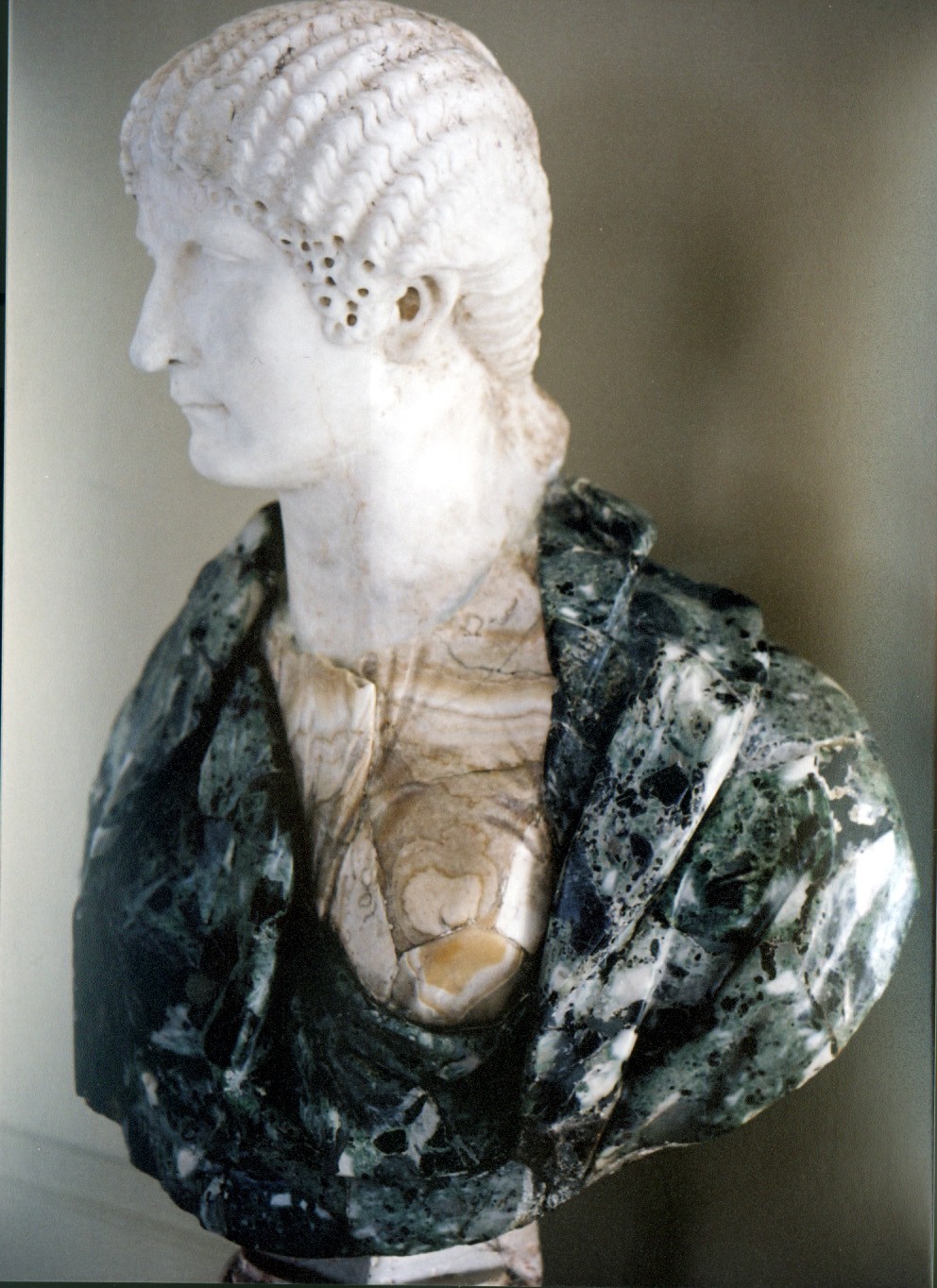The life-size bust at right of Agrippina the Younger (AD 15-59) is symbolic of ASMOSIA's mission with its inclusion of both white and colored stones from different periods and localities. It includes: (1) marmo pario, the Roman lychnites, for the head (marble from the Island of Paros in the Cyclades of the central Aegean Sea, Greece); (2) alabastro Egiziano or cotognino, the Roman lapis alabastrites or lapis onyx, for the tunic (banded travertine from the middle Nile Valley, Egypt); and (3) verde antico, the Roman marmor thessalicum, for the drapery (brecciated ophicalcite serpentinite from near Larisa in Thessaly, northern Greece). The head was carved about AD 40 but the rest of the bust consists of Baroque additions (sometime between the 16th and 18th centuries), which reused stones from Roman monuments. The bust is now in the Museum of Art at the Rhode Island School of Design (anonymous gift 56.097).
